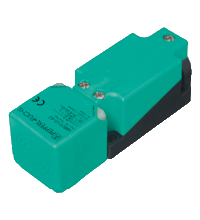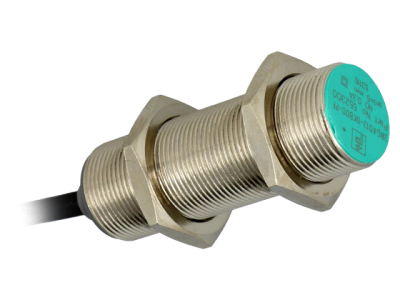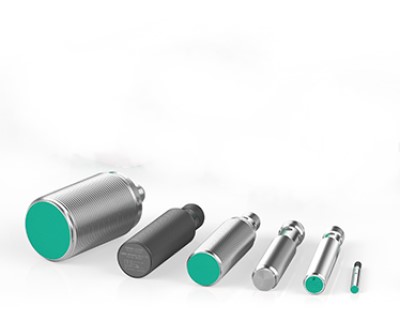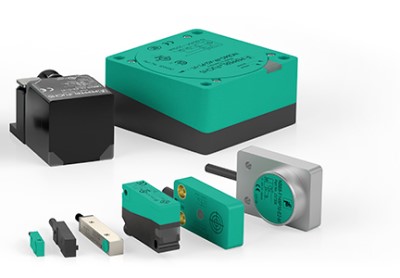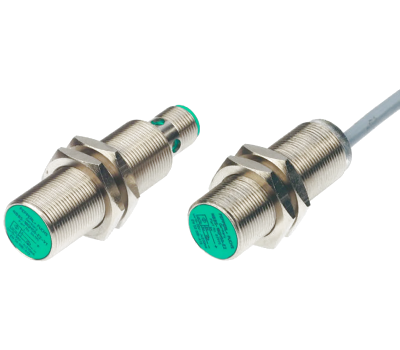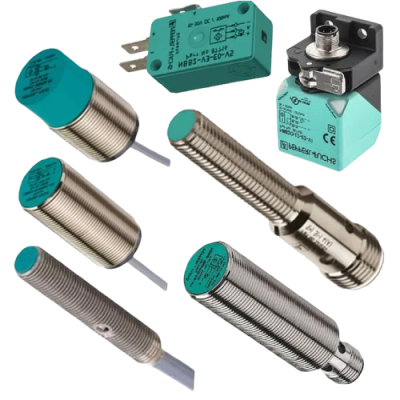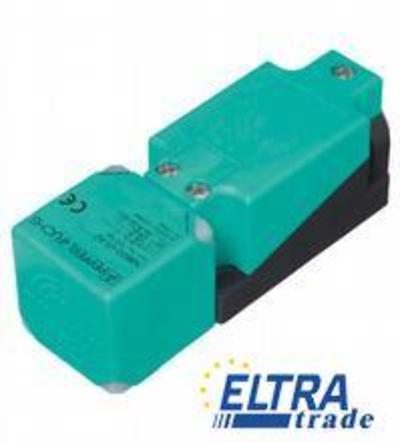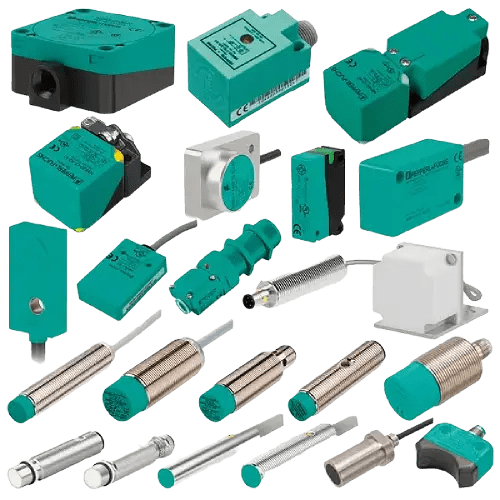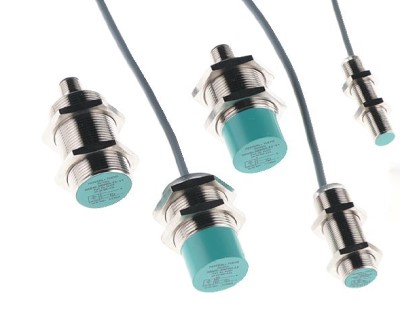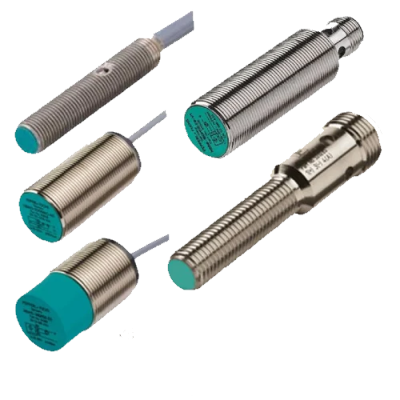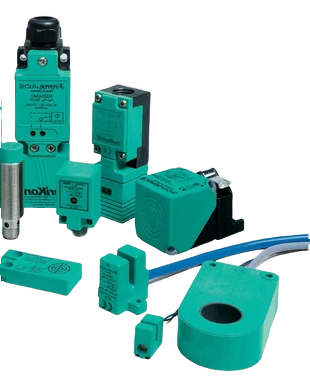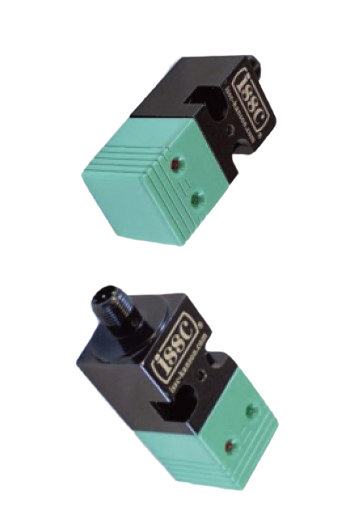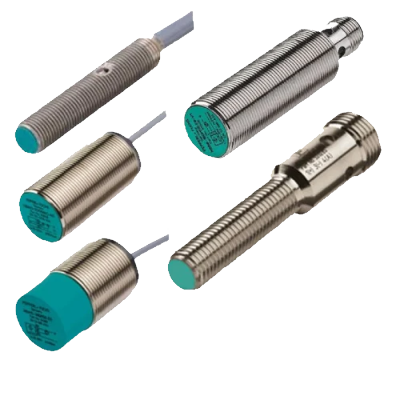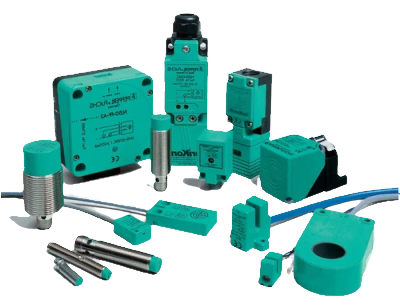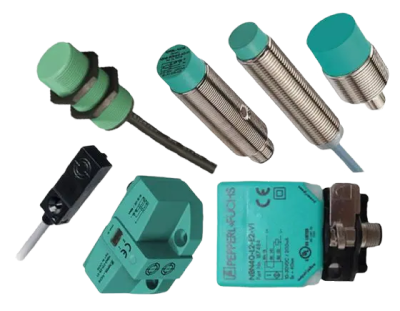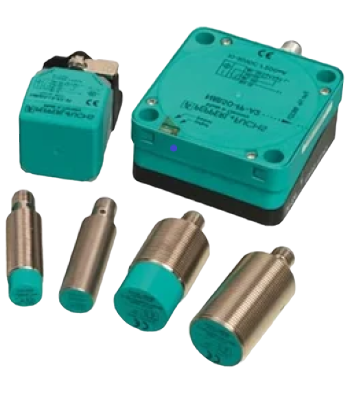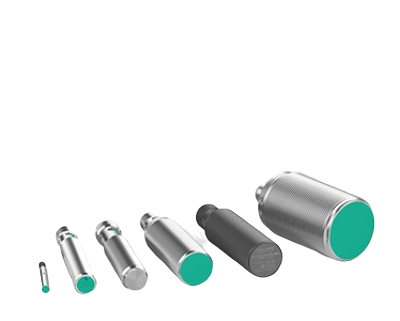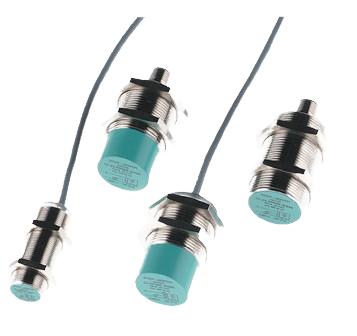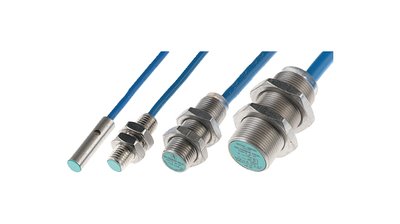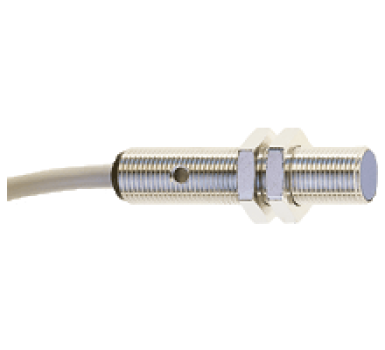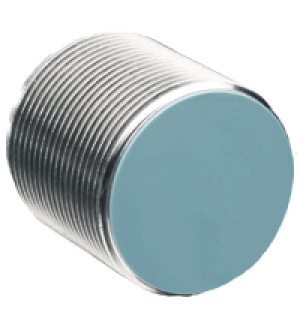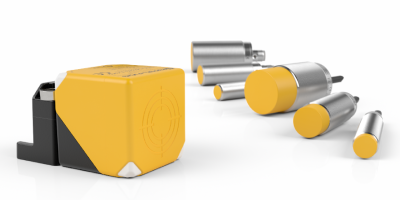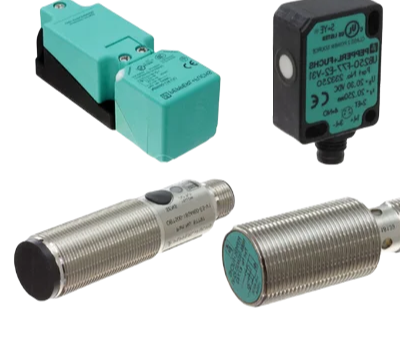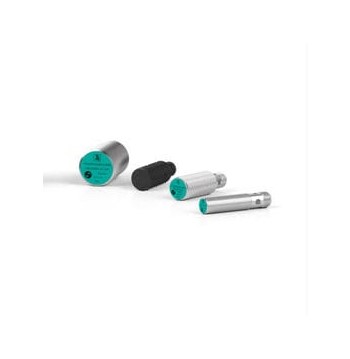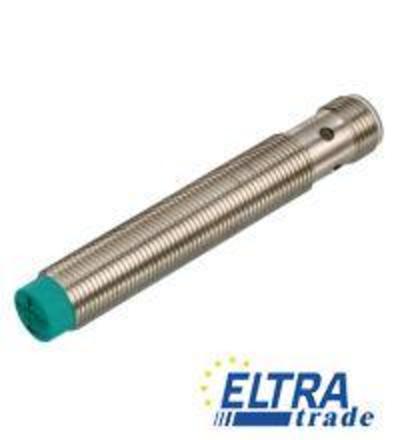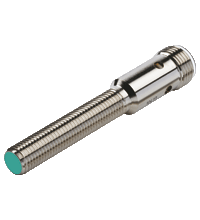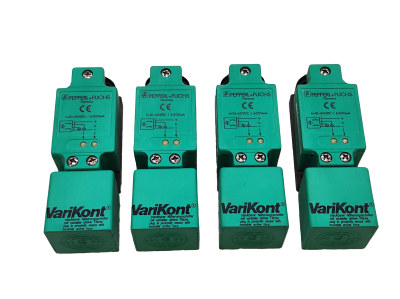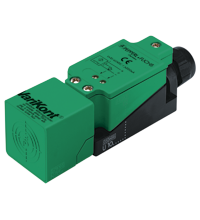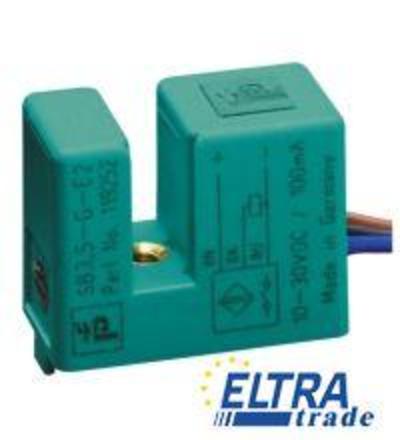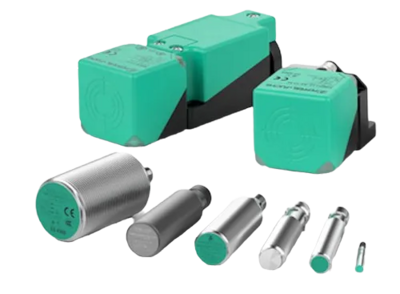Pepperl+Fuchs Inductive Proximity Sensors
- NBB Cylindrical sensors
- Slot inductive proximity sensor
- NB - NC - NR Rectangular sensors
- NBN Cylindrical sensors
- NCB - NCN Cylindrical sensors
- NEB - NEN Cylindrical sensors
- NMB - NMN Cylindrical sensors
- NRB - NRN Cylindrical sensors
- NJ - NE Rectangular sensors
- Other inductive sensors
- NT - NX Cylindrical sensors
IN STOCK!!!
Pepperl Fuchs NBB20U1UU non-contact inductive sensor
- art. 238884
- Diagnostic Coverage (DC)0 %
- Sensor head bidirectional and rotatable
- NO/NC selectable
- Comfort series
3rg4013
- Sensitivity: from 0.1 to 100 mm
- Operating range: 10 to 1000 mm
- Response time: from 0.1 to 100 milliseconds
- Noise level: from 0.1 to 100 millivolts
- Body: stainless steel or polycarbonate
Pepperl Fuchs NBB0
- Detects metal objects at a distance of 0.2 mm to 100 mm.
- Operate in the temperature range from -40 °C to 70 °C.
- Voltage range: 12 V to 24 V.
- Consume current from 1 mA to 20 mA.
- Protection class IP67
Pepperl+Fuchs NBB1 inductive sensors
- High reliability
- Durability
- Wide range of functions
- High accuracy
- Small size
NBB10 industrial inductive sensors
- Distance measurement accuracy up to 0.5 mm
- They operate in the temperature range from -40 to +85 °C.
- They are installed by flush mounting.
- Protected against water and dust.
- International standards for use in explosive atmospheres.
Inductive sensors of the NBB15 series
- Available in a wide range of specifications
- Highly reliable and durable
- Integration with Industry 4.0, wireless communication.
IN STOCK!!!
- art. 194767
- Sensor head bidirectional and rotatable
- 15 mm flush
- 4 LEDs indicator for 360° visibility
- Sensitivity: from 2 to 100 mm
- Working distance range: wide
- Resistance to contamination: high
- Easy installation and maintenance: high
nbb4
- Explosion protection class: Ex ia, Ex d
- Protection class against dust and moisture: IP68 / IP69K
- Wide range of performance characteristics
- Ability to operate in hazardous areas
Pepperl+Fuchs NBB5
- Provide high switching accuracy
- Designed for operation in harsh environments
- Available in a wide range of operating distances
- Have a high level of protection against dust and moisture
Pepperl Fuchs NBN12 Sensors
- Operate in a wide temperature range
- Wide range of supply voltages
- Wide range of detection distances
- Fast response time
- Protected against dust and water
NBN15 industrial inductive sensors
- High reliability and durability
- High accuracy of metal object detection
- Used in various industries
- Among the most affordable inductive sensors on the market
NBN25 inductive sensors
- High accuracy
- Low cost
- Wide range of additional options
nbn3
- Long operating range
- High sensitivity
- Wide operating temperature range
- High resistance to contamination
NBN4 sensors are used for:
- Level control
- Position control
- Absence of objects
- Size of objects
nbn40
- Low cost
- Easy integration
- Wide range of options
- Durability
NBN7 sensors are used:
- Liquid level control
- Monitoring the presence of objects
- Monitoring the position of objects
- Control of the speed of objects
- Product quality control
NBN8 inductive sensors
- Made of high quality materials
- Provide high measurement accuracy
- Used in various industries
- Easy to install and maintain
NCB5 inductive sensors
- Flexible end piece
- Metal end element
- Extended sensing area
- High sensitivity
3rg4012
- Self-diagnostic function
- Temperature compensation function
- Function of adjusting the working gap
3rg4014
- Control of small objects
- Control of objects of different sizes
- Monitoring objects in changing environments
- Monitoring objects in explosive environments
NCB15 inductive sensors
- Anti-Rattle
- Differential measurement
- Pulse measurement
- Distance measurement
- Different types of outputs
- Different sizes and shapes
NCB4 inductive sensors
- A wide range of options
- Protection against environmental influences
- Can be used in industrial Internet of Things (IIoT) systems
- High accuracy
Pepperl Fuchs NCB8 sensors
- Inductive sensors
- High accuracy and reliability
- Wide range of functions and options
- Ease of use
- Competitive price
- Series: Cylindrical type,
- Housing diameter: 12 mm, Housing material: Stainless steel 1.4305 / AISI 303,
- Rated operating distance: 4 mm,
- Connection type: Connector M12 x 1 , 4-pin,
- Output type: 2-wire,
- Installation: non-flush, Type of voltage: DC
art. 304615-0163
IN STOCK!!!
- 3 mm flush
- Increased operating distance
- Extended temperature range
-40 ... +85 В°C
pepperl fuchs nj15
- Output signal: switching, analog, frequency, digital
- Installation type: flush, inclined, angled
- Sensing surface material: metal, plastic
- Sensing surface size: from 10 to 100 mm
- Standards: CE, UL, CSA, ATEX, IECEx
- Comfort series
- 20 mm flush
- Slot type
- Housing material: Crastin (PBTB)
- Connection type: cable PVC
- 500 mm
- Output type: 3-wire
- Type of voltage: DC
Pepperl Fuchs VariKont sensor line
- Varikont proximity sensor are accurate and reliable.
- They are easy to install.
- They can be used in a variety of environments.
Explore Our Pepperl+Fuchs Sensor Range
Inductive proximity sensors are widely used in industrial applications. The principle of their operation is to detect metal objects near the sensitive element. They are not exposed to other materials. The detection distance may vary for different sensors. This is due to the design of the specific sensor and the type of metal that needs to be detected. Today, we will talk about Pepperl Fuchs proximity sensors in more detail.
Why Choose Pepperl+Fuchs Inductive Sensors?
Pepperl+Fuchs is a world-famous electronics manufacturer. It is not surprising that Pepperl+Fuchs sensing technologies are trendy. Let's find out how the company deserves such fame.
High quality and reliability
Pepperl+Fuchs is known for producing high-quality, reliable, and durable sensors. Their inductive sensors are designed to withstand harsh industrial environments and provide consistent, accurate performance over time.
Wide range of options
Pepperl+Fuchs offers various inductive sensors, including sizes, shapes, and sensing distances. This variety lets you choose the sensor that best suits your requirements.
Settings
The company often provides customization options to tailor the sensors to your needs. This may include adjusting sensing distances, cable lengths, etc.
Robust design
Every Pepperl Fuchs proximity sensor is designed to be rugged and resistant to environmental factors such as temperature, moisture, and vibration. This makes them suitable for use in various industries.
Hazardous area certification
Pepperl+Fuchs is renowned for its expertise in sensors for hazardous areas, including explosive atmospheres. Their inductive sensors often have the appropriate certifications and approvals for such applications.
Long service life
Pepperl+Fuchs sensors are designed for long service life and minimal maintenance requirements, reducing downtime and operating costs.
Industry experience
The company has a strong reputation in industrial automation and non-contact sensors technology and its sensors are used in a wide range of industries, including automotive, pharmaceuticals, food and beverage, and more.
Global support and service
Pepperl+Fuchs has a worldwide presence, which means you can access technical support and services for their products in multiple locations worldwide.
Innovative technologies
Pepperl+Fuchs invests in research and development to remain at the forefront of sensor technology, ensuring its products include the latest innovations and features.
Integration options
Pepperl+Fuchs sensors are often designed to be compatible with various automation and control systems, making them easy to integrate into existing processes.
Types of Pepperl+Fuchs Inductive Proximity Sensors
Pepperl+Fuchs produces a wide range of induction sensors. Let's determine which P&F proximity sensor you can purchase for your needs.
Inductive analog output sensors
Such P&F sensors are used to detect metal objects in specific operating ranges. This distance to the object is then converted into an analog output signal proportional to the distance, making these sensors ideal for measurement and control applications. Due to its low-temperature deviation, it remains reliable and accurate even in variable environmental conditions.
Proximity switches with NAMUR output
Sensors with NAMUR output can be used safely in explosive atmospheres. Using a circuit containing a NAMUR proximity sensor is only intrinsically safe if it is powered through a suitable isolation amplifier.
Proximity switch with "Metal Face"
These rugged and durable metal-faced sensors are housed in stainless steel, making them the best choice for these applications. Applications such as machine tools or metal processing often expose the sensor to targeted impacts, abrasion, and exposure to harsh solvents and liquids.
Pressure-resistant proximity switches
This range of sensors is pressure-resistant and suitable for hydraulic actuators and cylinders. The sensors can withstand pressures of up to 350 bar (cylindrical version M18) or 500 bar (cylindrical version M12) dynamically applied to the active surface.
Bus-enabled proximity switches
These smart proximity sensors expand their functionality, including power line monitoring, diagnostics, and network communication with a programmable logic controller. AS-Interface proximity switches have fault indication, on/off delay, and internal oscillator monitoring. These sensors are available in cylindrical, rectangular, and F-shaped housings with threaded mounting.
Proximity switches with protection category IP69k
Pepperl+Fuchs has developed new sensor features to reduce exposure to high-pressure environments and ensure trouble-free use in such applications. The design features of these devices are a tighter fit of mechanical parts, which allows for performance that significantly exceeds the test requirements for classes IP67/IP68.
Proximity switches with increased switching distance
These extended-range sensors can be used to solve problems such as installation restrictions and mechanical tolerances or for detection through protective coatings. They are also great for detecting small objects or overcoming material-dependent reduction factors.
Slotted proximity sensors
Slotted proximity sensors consist of a dual coil system that is sensitive to the opening of the slot. If a piece of metal is inserted into the sensor groove, the inductive coupling between the coils will be reduced depending on the depth of the target metal. The proximity switch will operate once this connection drops below a critical value. This type of proximity switch is less affected by the characteristics of the metal. It is also less sensitive to changes in target position in the direction of the core axis.
Proximity switches for valve actuators
Pepperl+Fcus valve position feedback sensors are available in standard housings according to VDI/VDE 3845 and in open solutions. These proximity sensors are available in direct actuator mounting options for quick connection, easy replacement, and exceptional compactness. Also available in standard-shaped housings that are well-protected and have integral terminals for the switch and control valve.
Proximity sensors for use in strong DC and AC fields (weld-proof)
Highly resistant to strong magnetic fields and enhanced mechanical strength, these sensors feature a durable Ryton sensing surface to protect against molten metal and a weld-resistant brass body, making them an ideal solution for harsh environments.
Ring proximity switches
Pepperl+Fuchs manufactures a range of ring-type proximity switches equipped with a coil to activate the controller as soon as a metal object is detected within the ring's circumference. Such sensors usually detect and count small metal parts passing through a ring proximity sensor. Both ferrous (FE) and non-ferrous (NFE) metals are detected.
Applications and Industries
Pepperl+Fuchs automation products are used in many different industrial applications. Let's find out which ones exactly.
- Manufacturing and automation. Inductive sensors are widely used in manufacturing and factory automation for tasks such as part presence detection, counting, and position control. They help improve the efficiency and accuracy of production lines.
- Loading and unloading operations. Conveyor systems and material handling equipment use inductive sensors to detect the presence of objects or monitor the movement of products along a conveyor belt.
- Package. Inductive sensors are used in packaging equipment to detect the position of packaging materials, check the presence of labels or caps, and monitor the packaging process.
- Automotive industry. In the automotive industry, inductive sensors detect metal components, monitor assembly processes, and control robotic equipment.
- Food and drinks. In the food and beverage industry, inductive sensors play a critical role in detecting and sorting products on conveyor belts, ensuring accurate fill levels, and monitoring the availability of packaging materials.
- Pharmaceuticals. Inductive sensors are used for quality control and inspection tasks in pharmaceutical manufacturing, such as checking the presence of capsules in blister packs.
- Agriculture. In the agricultural sector, inductive sensors are used in machines for planting, harvesting, and sorting produce.
- Mining and heavy equipment. Inductive sensors can operate in the harsh environments of mining and construction equipment. They are used to monitor the condition of equipment and detect the presence of metal objects.
- Oil and gas. In oil and gas exploration and production, inductive sensors are used in various applications, including equipment monitoring and safety systems in hazardous areas.
- Chemical industry. Inductive sensors can be found in chemical plants, where they are used to measure liquid levels, monitor tanks, and provide safety.
- Water and wastewater treatment. These sensors are used in water and wastewater treatment facilities to control pumps, monitor flow, and measure levels.
- Railway transport. Inductive sensors are used in the railway industry's track and train control systems. They can detect the presence of trains and ensure safe and efficient rail travel.
- Textile industry. In the textile industry, inductive sensors detect thread breakage, monitor yarn tension, and identify fabric.
- Woodworking and sawmills. Inductive sensors are used in woodworking equipment to detect the presence of workpieces and control the cutting process.
- Electronics production. In electronics manufacturing, these sensors detect components on printed circuit boards (PCBs) and ensure accurate placement and soldering.
- Renewable energy. Inductive sensors are used in wind turbines and solar panels to monitor equipment conditions and detect faults.
Technical Specifications and Resources
Inductive proximity sensors are the preferred choice for most applications requiring accurate, non-contact detection of metal objects in machinery or automation. Let's find out the main technical specifications of Pepperl+Fuchs proximity sensors.
- Smooth or threaded stainless steel housings.
- Polarity reversal and short circuit protection.
- LED status indication.
- Connection styles include models with M8, M12, or terminal connectors.
- Inductive sensor wiring using PVC, PU, or silicon cables.
- Outputs are in 2-, 3-, and 4-wire DC, AC, NAMUR, and AS-interface versions.
- Analog output models with 4–20 mA output.
- Built-in speed monitor with an operating frequency of up to 100 Hz.
- Pressure-resistant sensors for cylinders up to 500 bar.
- Sensors approved for gas and dust hazardous areas.
- Models with sensitive stainless steel surfaces.
- Protection class up to IP68/IP69k (resistant to immersion in water/high-pressure water jets).
- Weld-resistant structures with PTFE-coated surfaces.
- Reduction factor 1, all metals are detected at the same distance.
- Exclusive models for detecting ferrous and non-ferrous metals.
- Extended temperature range: -40 °C to +250 °C.
